Cloverfield Notes
1. Technical and Cultural codes
How is the film shot?
The film is shot with the look of a handheld video camera. This accounts for the shaky, erratic shooting. No tripods, dolly, cranes or rostrums seem to be used. The illusion of the amateur shooting is maintained by the use of a video camera light and night vision light in the subway section. The eye witness idea of the hand-held camera is also suggested by the official titles at the start of the movie suggesting that the tape was ‘recovered’ in Central Park by the military.
The style of camera use is clearly reminiscent of an uploaded Youtube video. This style of filming helps creates the illusion of a real experience. The camera is the ‘witness’ to the terror the city and the main characters feel. The first person viewpoint of the camera seems to be an authentic account of what happened and is suggestive of the footage which was assembled after the 9/11 attacks on New York where the film is set.
How is the film lit?
The film stays true to the hand held amateurish style of filming by using naturalistic lighting throughout. The light sources are those we would expect from someone filming at night, the street lights, nights of the city etc. This adds to the sense of a real experience for the main characters and the people of the city. It also helps add to the sense of terror as the monster is only caught in glimpses in the darkness.
Although naturalistic the film does have several moments of powerful and memorable lighting for example
The subway attack by the spiders where night-vision is used to powerful effect
The army base where the powerful white lighting suggests disorientation.
The final sequence in Central Park where the daylight looks weak and feeble.
What sets, colours, costumes and props are used?
NYC seems to be very real in the film as though it was actually filmed in the streets there. This was seen in the opening sequences which conveyed a wealthy Manhattan with young mainly white Manhattanites. However it is clear from the action of the film that CGI was used extensively in the film. However the realness of the setting is powerfully conveyed. The sets, notably the subway station, the army base and the party apartment help create a verisimilar world for the audience.
The colours of the film are in keeping with the night and the destruction of the movie. An interesting aspect was that of the monster which appeared pale and almost fleshy, its anaemic body tones acted as a contrast to the darkened city it was terrorising.
The costumes were interesting especially those of the main characters as they were dressed for a party and as the film and the terror of the otherness unfolded, their costumes became more torn and destroyed underlining the destruction of the city and the world they knew. Their costuming was also a stark contrast to those of the soldiers in the underground base conveying the contrast between the soldiers’ military purpose and the bewilderment of the four main characters.
The main props which are significant were the camera which is often referred to in the narrative and the use of mobile phones which are used effectively when the otherness first attacks. The Manhattanites film the head of the Statue of Liberty again underlining the Youtube aspect of the filming.
Sounds/Music
The film is filled with the visceral sounds (foley) of terror – explosions, screaming, gunshots, helicopters, general panic. Most notably the sound of the monster is particularly striking. It is the noise of otherness, a wailing rage which causes excitement in the audience and helps underline the directionless nature of destruction through the city.
It is interesting that the film does not use music to help engage audience pleasure which is normally the case in this genre of movie. There is no horror chord. Instead the characters and the audience react to the noises of the destruction and the rampaging otherness. The film still manages to engage audience pleasure through the powerful foley sounds of the movie.
Genre
Cloverfield is in many ways an INTERTEXTUAL movie with elements of romance (Rob’s search for Beth), Disaster (reminiscent of The Day After Tomorrow, Godzilla) and some Comedy (Hud’s often comic commentary on events) and Sci Fi (The War of the Worlds and Independence Day)
However it is predominantly a Horror movie. The genre markers for Horror can generally be applied to Cloverfield –
The Otherness is clearly the monster which terrorises the city (in many ways the film uses the monster otherness as a metaphor for the Twin Tower attacks of 9/11). The otherness of Cloverfield reminds us of classic monster movies such as King Kong, Godzilla and Jurassic Park, movies which the film’s demographic would recognise and which would draw them into the cinema.
The otherness of Cloverfield strikes us as quite interesting for several reasons.
Unlike other monster movies, the Cloverfiled monster defies understanding for the audience. Questions such as where did it come from? Why is it attacking? What does it want? What is its purpose are not explained. This is not disappointing for the audience in terms of narrative as we are more concerned with the experience of the four main characters.
The monster is grotesque and ambiguous in its terror. Is it wailing in pain or pleasure?
It is indestructible as an otherness
Is it female (spawning vicious spidery things)? If so it suggests an interesting representation which will be discussed later.
The otherness comes to society much like classic horror but it is not confronted by the main characters of the film who try to flee its floundering, flailing limbs.
The Terrible Place is New York City and more specifically, Manhattan, the wealthiest area of the city and the location of business and the former Twin Towers. The essential nature of New York, its sky scrapers and night life are decimated by the otherness in the space of a few hours. During the attack all areas of the city change their nature, with each street, building shop or subway station a place of the otherness to attack.
Punishment is a key genre marker for Horror. In Cloverfield as explained above, it is unclear why the city is being punished or why it is the young people who we see being chased who are the victims of the otherness. The film instead focuses on the reactions to the attack. In some ways it could be argued that the otherness itself seems unsure of its purpose.
As with most horror films there is a clear and significant difference between
Night and Day in the film. The daylight scenes deal with happier times – the trip to Coney Island by Beth and Rob and the preparation for Rob’s party. The daylight trip to Coney Island and its romantic element is effectively cut into the video recording of the nigh-time terror of the otherness. The terror strikes at 12.20 – after midnight an almost iconic time for otherness to emerge. The night time shows the lights go out across Manhattan suggesting the power of the otherness. The night hides the whereabouts of the otherness and in particular its spidery babies who infest the subways etc.
However as the film comes to its narrative closure we note that it is dawn and the otherness is still attacking suggesting that its power is unaffected by the time of day unlike other monstrous otherness such as Dracula.
The Final Girl is perhaps the one genre marker for horror which is problematic in categorising Cloverfield. There is no final girl who is brave and who confronts the otherness as in other horrors such as the Texas Chainsaw Massacre, Scream or The Orphanage. The females in the film do show courage (Beth and Marlena are examples of this) however they all are destroyed by the monstrous otherness as the narrative unfolds.
Representations in Cloverfield
In discussing representations it is important to ask
What are the activities of the males and the females? Are those activities different? What are the differences and do those differences conform to what we believe?
The females in the film offer an interesting range of representations when we read the film differentially.
There are clearly examples of female courage in the film for example with Marlena in the tunnel when she saves Hud from the spiders. Also Beth shows courage in surviving in her building then dragging Rob from the helicopter wreckage. These actions perhaps challenge traditional views of gender.
On the other hand we see females in the film organising Rob’s party and showing care and thoughtfulness when the monster attacks. They follow Rob who is clearly the leader of the main characters but they do suggest alternatives to his plan which seem more cautious and logical.
Beth is ‘saved’ by Rob whom she calls for help. She can be described as the ‘female quest object’ (Propp) trapped in her ‘tower’ waiting to be saved by the male hero. This is a traditional representation of females in the film. Beth is represented here as a passive weak female who is dependent on the help of a man.
The males Rob and Hud are men of action – Rob seeking out his love, Beth and Hud determinedly recording the terror of the otherness on the video camera. Therefore we may say that male representations in the movie are traditional and conform to what we regard as normal.
Perhaps the most interesting representation in Cloverfield is the monster itself who may be considered female as it seems to spawn fleshy spiders. If so this suggests a monstrous female and therefore females are represented as destroyers and as the otherness. It could be argued that the female monster is bringing destruction to an essentially peaceful, young society and it is the men in the film who lead the action against its rampage.
It is true to say that Cloverfield provides a wide and complex range of female representations in the film when we read it differentially.
In addition it is interesting to think about the representation of New York in the city. As has been mentioned earlier, the film can be seen as an exploration of 9/11. There are other films which explore this theme such as The Dark Knight and The Mist. In JJ Abrams’ Cloverfield the view of NYC is of a city in panic being wildly destroyed. Its wealthy young inhabitants have no idea what is attacking them or why they are being attacked. The terrorists are represented by a monster who brings meaningless chaos to their streets. Abrams seems to be suggesting that the terror can never be explained and what is important is that we experience what it feels like to be caught up in a terror attack – hence the hand held camera etc.
Narrative
It is interesting when we try to understand Cloverfield in terms of the Classic Narrative Formula (CNF).
The world of the film is most certainly verisimilar. New York is instantly recognisable as is the romance aspect of the narrative. The young people are easily understood and can be related to by their young audience. Their anxieties also seem real even though the source of those anxieties (the otherness) is not verisimilar. The verisimilar world of the film will undoubtedly help engage the audience.
The film roughly adheres to a 3 act structure of Classic Narrative. The equilibrium is established in the first 20 minutes of the film with the party and the Coney Island trip and the romance between Beth and Rob. A good deal of the equilibrium is shot in daylight naturalistic lighting. The disequilibrium is clearly the arrival of the monstrous abject which is signalled in the film with the power cut and lights of the skyscrapers going out. Most of the disequilibrium is shot in low key naturalistic lighting. It is debatable to what extent equilibrium is restored since the main characters are all destroyed. However the final shot of the film is of Rob and Beth at Coney Island arm in arm suggesting that they have found each other and expressed their feelings for each other.
The narrative of the film is propelled by the cause and effect actions of the characters. The monster attacks the city and the four main characters respond in various ways trying to survive and find their way to Beth. The search for Beth is caused by Rob and her disagreeing at his surprise party.
It is interesting to ponder whether or not the film has a strong narrative closure which is pleasurable to the audience. The abject survives and is in fact seemingly indestructible. Nowhere in the city is safe as Beth and Rob discover as they shelter in a tunnel in Central Park. A normal narrative closure would be a confrontation with the monster and its defeat. However it is the main characters who are destroyed not the monster leaving several unanswered questions. On the other hand we can argue for a strong narrative closure insofar as Beth and Rob are finally together and have pronounced their love for one another. This is uplifting since their pledges of love are the last things we hear before they are destroyed by the otherness and it can be seen as a courageous statement which the monster cannot destroy even though it extinguishes life. This is underlined by the final scene which is from the Coney Island sequence.
Codes
The two main narrative codes which can be read in Cloverfield are Hermeneutic (enigma) and Proaretic (action) codes. The film uses enigma snares especially in the disequilibrium stages of the narrative. Questions such as what is happening to the city? Who or what is attacking them? Why are they being attacked? How will they survive? Will Rob make it through the city? – all act as snares (Barthes) to hook the audience into the unfolding narrative. Furthermore the action codes which mainly centre around Rob’s journey through the city and the actions of the army against the abject all serve to raise the excitement level and engagement of the demographic.
Audience
There are several indicators which suggest that the target demographic for Cloverfield is the largely student 15-25s range.
The film is a Horror which is traditionally very popular with this demographic who are the ones who use the cinema the most and are the ones with the largest disposable income. Of course as well as being a Horror it also has appealing intertextual element (mentioned earlier) which again has proven popular with young modern audiences.
The film is a similar product to films such as The Blair Witch Project, The Host, Children of Men, Godzilla and Peter Jackson’s King Kong which have all proven popular with young audiences. In addition JJ Abrams and his creative team have had great success with TV with Lost and the teenage orientated Felicity. Therefore there is a strong understanding by JJ Abrams of his targeted demographic.
As mentioned earlier, the film is reminiscent of a Youtube video and of course this is an internet site enjoyed mainly by the 15-25 demographic.
Cloverfield has a young cast of actors which helps create the verisimilar world for its young audience and the concept of a city under attack is one which young audiences find appealing.
The film also has many visceral pleasures for the audience. Through the use of the handheld camera the audience can enjoy the illusion of witnessing the terror of the abject at first hand. Fear and excitement are the prevailing pleasures for the demographic. However there are some cognitive pleasures as the source of the abject is puzzling as is the character of Marlena.
Wednesday, 1 October 2008
Subscribe to:
Post Comments (Atom)

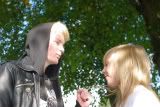
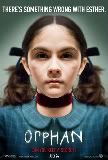
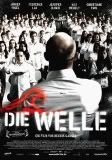




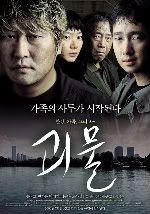

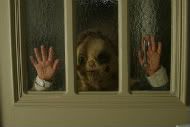
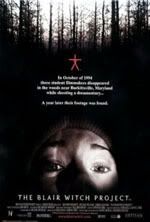
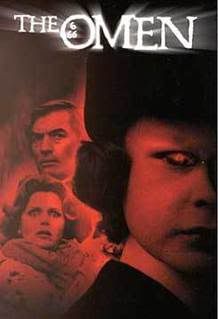


No comments:
Post a Comment